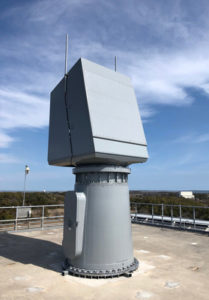Naval Sea Systems Command awarded Raytheon Technologies [RTX] a $126 million modification to exercise options to produce six more Enterprise Air Surveillance Radar (EASR) low rate initial production (LRIP) units.

Four of the EASR LRIP units will be as AN/SPY-6(V)2 (air and missile defense radar): EASR rotator LRIP units deployed on the amphibious assault ship USS Bougainville (LHA-8); aircraft carrier USS John C. Stennis (CVN-74); San Antonio-class USS Richard M. McCool Jr. (LPD-29); and the first Flight II San Antonio-class USS Harrisburg (LPD-30).
The remaining two will be AN/SPY-6(V)3 EASR fixed-face LRIP units deployed on the carrier USS John F. Kennedy (CVN-79) and the first new FFG(X) future guided-missile frigate.
The S-band EASR is the latest sensor in the SPY-6 family of radars and provides anti-air and anti-surface warfare, electronic protection, and air traffic control for amphibious warfare ships and aircraft carriers. It is set to replace the N/SPS-48G air search radar currently on the USS America (LHA-6) and USS Tripoli (LHA-7).
In June, a Government Accountability Office (GAO) report named EASR reliance as the biggest program risk for LHA-8 (Defense Daily, June 5).
GAO noted during the radar development, the Navy found the mast blocked EASR’s field of view, forcing the service to reconfigure the mast and nearby antennas. This may then affect LHA-8’s planned delivery date of Jan. 2024.
The EASR production work will largely occur in Marlborough, Mass. and is expected to be finished by Jan. 2023.
The Navy said $122 million in fiscal years 2017, 2018, and 2020 shipbuilding accounts was obligated at the time of award and funds will not expire at the end of this fiscal year.